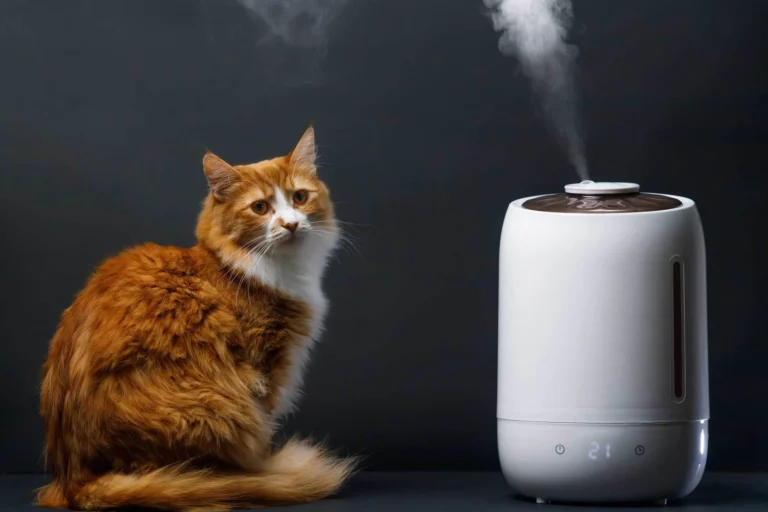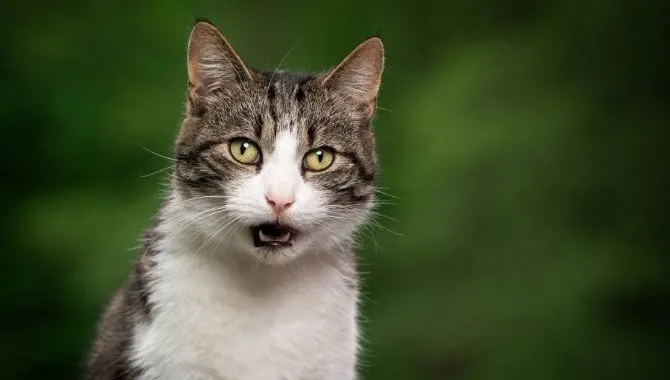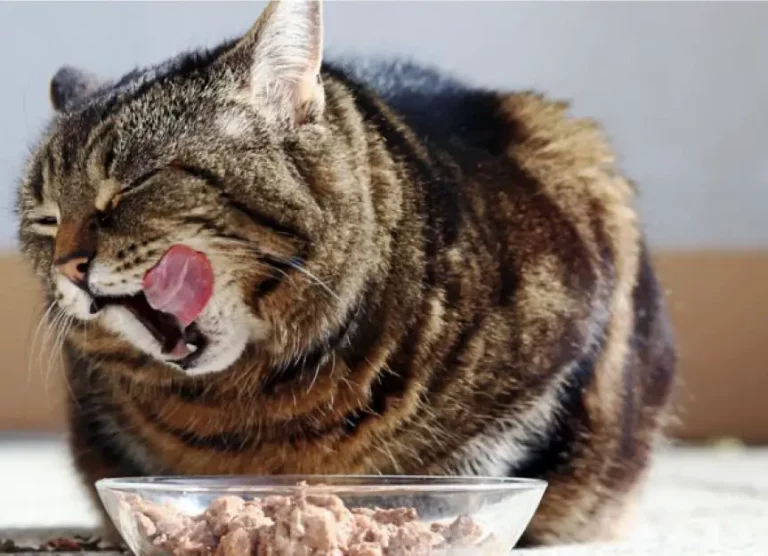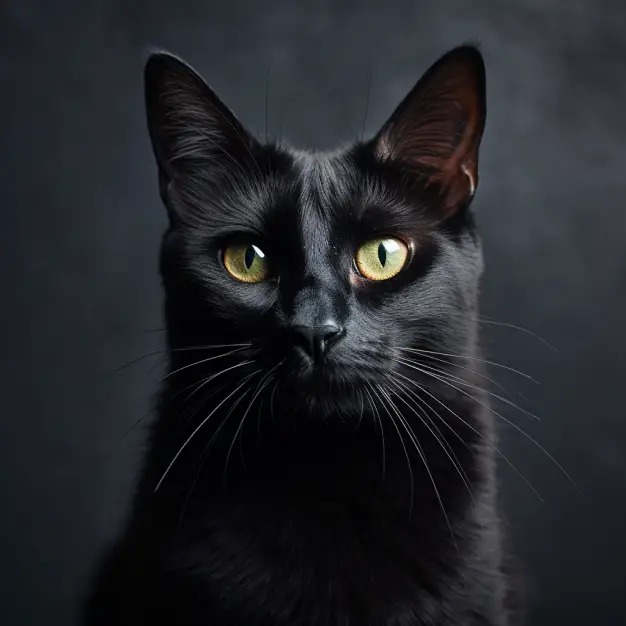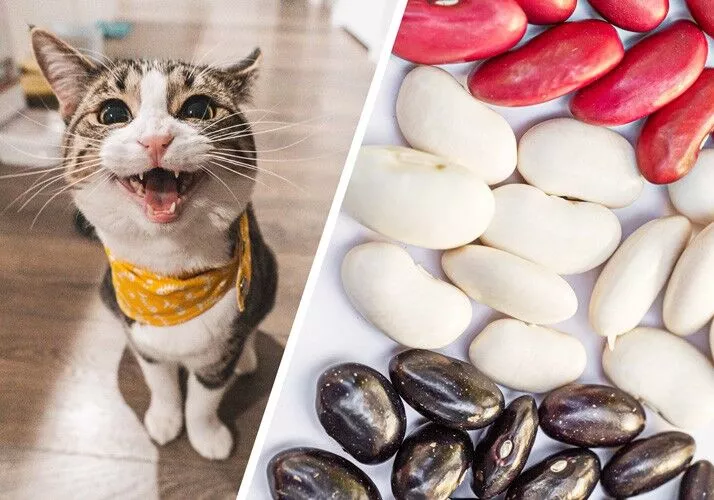Can a Cat Breathe Through Its Mouth? Understanding Feline Breathing Patterns
As a cat owner, understanding your cat’s breathing patterns is vital to identifying potential health issues and gauging their overall well-being. Cats primarily breathe through their nose, filtering air and regulating temperature.
However, certain situations or health conditions might cause mouth breathing. In this post, we’ll explore feline breathing patterns, anatomy, and reasons behind potential mouth breathing.
Key takeaways
Cats primarily breathe through their nose, regulating air temperature and humidity.
Mouth breathing in cats is usually a sign of distress or health issues.
Conditions leading to mouth breathing can include respiratory diseases, heatstroke, or stress.
Immediate vet attention is necessary if a cat is breathing through its mouth.
Prevention and early detection of potential issues can help maintain a cat’s healthy breathing patterns.
Cat Anatomy and Breathing
The nasal passages in cats
The nasal passages in cats are a critical component of their respiratory system. These passages are lined with tiny hair-like structures called cilia, which help filter out particles and impurities from the air.
The nasal passages also contain many blood vessels that help warm and humidify the air before it reaches the lungs, ensuring a comfortable and efficient breathing process.
The importance of the diaphragm
The diaphragm is a large, dome-shaped muscle located at the base of the lungs and separates the thoracic cavity from the abdominal cavity. When a cat breathes in, the diaphragm contracts and flattens, creating a negative pressure within the thoracic cavity.
This negative pressure allows the lungs to expand, drawing air into the respiratory system. When the diaphragm relaxes during exhalation, the lungs contract, expelling air from the respiratory system. The diaphragm plays a crucial role in facilitating normal, healthy breathing in cats.
The role of the larynx
The larynx, commonly referred to as the voice box, is a cartilaginous structure located at the top of the trachea. It serves as a gateway for air entering and exiting the respiratory system.
The larynx also houses the vocal cords, which are responsible for producing a variety of sounds, including meows and purrs. When a cat is breathing normally, the larynx remains open, allowing air to pass through the trachea and into the lungs.
In certain circumstances, such as illness or injury, the larynx may become obstructed or inflamed, affecting a cat’s ability to breathe normally.
Normal Feline Breathing
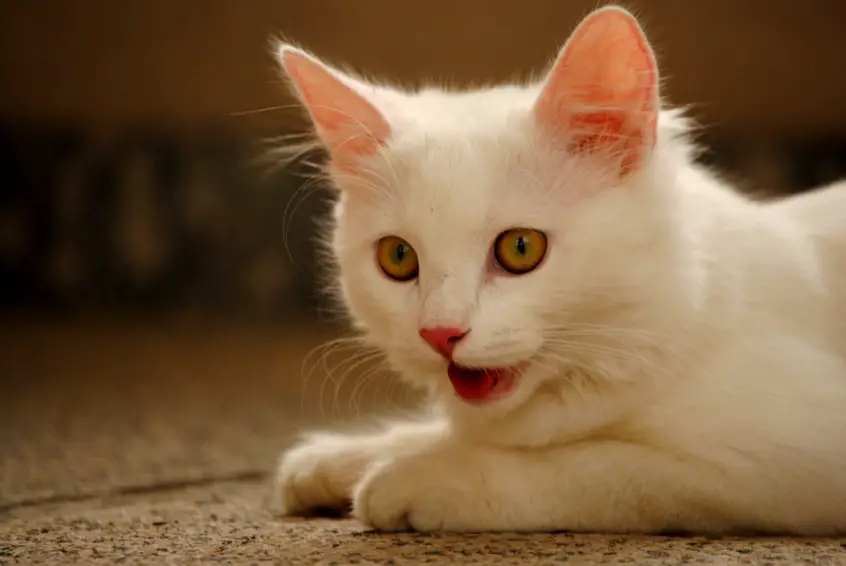
Nasal breathing in cats
Under normal circumstances, cats breathe exclusively through their noses. As obligate nasal breathers, cats have evolved to efficiently extract oxygen from the air using their nasal passages. Nasal breathing allows cats to filter, warm, and humidify the air, making it easier for their lungs to process.
In addition, nasal breathing enables cats to maintain their sense of smell, which is a critical aspect of their behavior and communication.
Typical respiratory rate for cats
The normal respiratory rate for a healthy, resting cat typically ranges between 20 and 30 breaths per minute. However, factors such as age, breed, and activity level may cause variations in a cat’s respiratory rate.
Monitoring your cat’s regular breathing patterns can help you identify any deviations that may indicate a potential health issue.
Signs of healthy breathing in cats
Healthy breathing in cats should be quiet, smooth, and effortless. When observing your cat’s breathing, pay attention to the following:
- The rise and fall of their chest: It should be even and consistent, without any signs of strain or difficulty.
- Nostril movement: The nostrils should remain relaxed and not flare during inhalation or exhalation.
- Sound: There should be no wheezing, crackling, or other unusual noises associated with your cat’s breathing.
If you notice any changes or abnormalities in your cat’s breathing, consult your veterinarian to determine the cause and address any potential health concerns.
Open Mouth Breathing in Cats
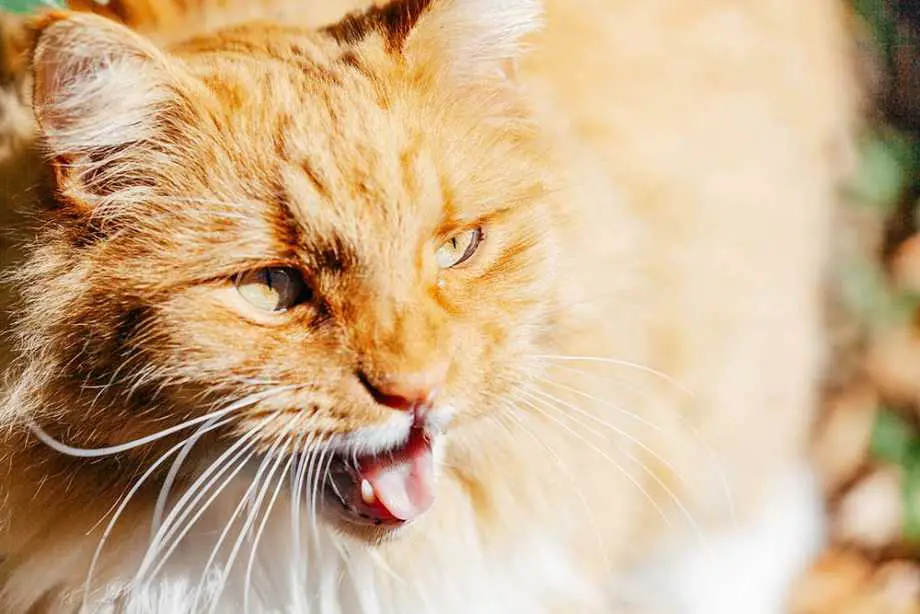
Why cats may breathe through their mouth
Although cats are primarily nasal breathers, there are situations where they might resort to breathing through their mouths. Some common reasons include:
- Overheating: Cats may pant with their mouths open when they are too hot, similar to dogs. This behavior helps them dissipate heat and cool down their bodies. If you notice your cat panting, ensure they have access to a cool, shaded area, and provide fresh water to help them stay hydrated.
- Stress or fear: A frightened or anxious cat may breathe through its mouth as a response to stress. In such cases, it is essential to identify the source of your cat’s stress and try to minimize or eliminate it to restore their sense of comfort and well-being.
- Respiratory infection: An upper respiratory infection or congestion can make it difficult for a cat to breathe through its nose. In these cases, cats may resort to open mouth breathing to compensate for the blocked nasal passages.
When open mouth breathing is a cause for concern
While occasional open mouth breathing may not be a cause for concern, persistent or sudden open mouth breathing could indicate a more serious health issue. If your cat exhibits labored breathing, blue or pale gums, coughing, or any other signs of respiratory distress, seek veterinary attention immediately.
Early intervention can be crucial in addressing underlying health problems and preventing complications.
Respiratory Problems in Cats
Common respiratory issues
Cats can be prone to several respiratory problems, some of which may cause open mouth breathing or difficulty breathing. Common respiratory issues include:
- Asthma: Feline asthma is a chronic inflammatory condition that affects the airways, causing them to constrict and produce excess mucus. This can lead to coughing, wheezing, and difficulty breathing in affected cats.
- Bronchitis: Bronchitis is an inflammation of the bronchi, the air passages that connect the trachea to the lungs. It can be acute or chronic and may cause coughing, gagging, and labored breathing.
- Upper respiratory infections: Upper respiratory infections, often caused by viruses or bacteria, can result in sneezing, nasal discharge, and congestion. These infections may make it difficult for a cat to breathe through its nose, leading to open mouth breathing.
Symptoms of respiratory problems
Signs of respiratory problems in cats can vary depending on the underlying issue. Common symptoms include:
- Labored or rapid breathing
- Open mouth breathing or panting
- Coughing, gagging, or retching
- Nasal discharge or congestion
- Sneezing or wheezing
- Lethargy or decreased activity levels
Treatment and management
If you suspect your cat has a respiratory problem, consult your veterinarian for a proper diagnosis and treatment plan. Treatment may involve medication, such as antibiotics or anti-inflammatory drugs, or in more severe cases, oxygen therapy or hospitalization.
In addition to veterinary care, maintaining a clean and stress-free environment can help support your cat’s recovery and overall respiratory health.
Preventing Breathing Problems in Cats
Importance of regular veterinary check-ups
Scheduling regular veterinary checkups is an essential aspect of maintaining your cat’s overall health, including their respiratory well-being. Routine examinations can help identify potential health issues early on, increasing the chances of successful treatment and preventing complications.
Make sure to discuss any concerns or changes in your cat’s breathing patterns with your veterinarian.
Keeping the home environment clean
A clean home environment can significantly reduce the risk of respiratory issues in cats. To minimize allergens and irritants that may affect your cat’s breathing, consider the following tips:
- Regularly clean and vacuum your home to remove dust, dander, and other allergens.
- Use air purifiers to help filter out airborne particles and improve indoor air quality.
- Keep your cat’s bedding and litter box clean and fresh.
- Avoid using strong-smelling cleaning products, air fresheners, or candles that may irritate your cat’s respiratory system.
Reducing stress for your cat
Stress can negatively impact your cat’s health, including their respiratory function. To help reduce stress and promote a sense of well-being in your cat:
- Provide a safe, comfortable space for your cat to retreat when they feel overwhelmed.
- Maintain a consistent routine, including feeding times and play sessions.
- Offer interactive toys and scratching posts to keep your cat engaged and mentally stimulated.
- Consider using pheromone diffusers or sprays to create a calming environment for your cat.
By taking these preventive measures, you can help ensure that your cat enjoys a healthy and comfortable life, free from respiratory issues.
Frequently Asked Questions
Why is my cat panting like a dog?
Cats may pant like a dog for several reasons. Overheating is a common cause, as panting helps dissipate heat and cool down their bodies. Stress or fear can also cause a cat to pant. In some cases, panting may indicate an underlying health issue, such as a respiratory problem or heart disease.
If your cat’s panting is persistent, seems unusual, or is accompanied by other symptoms, consult your veterinarian.
How can I tell if my cat is having trouble breathing?
Signs that your cat may be having trouble breathing include labored or rapid breathing, open mouth breathing or panting, flared nostrils, wheezing, coughing, blue or pale gums, and restlessness. If you notice any of these symptoms, seek veterinary attention immediately, as they may indicate a serious health issue.
Can allergies cause breathing problems in cats?
Yes, allergies can cause breathing problems in cats. Allergic reactions to environmental allergens, such as pollen, mold, or dust, can lead to inflammation in the airways and respiratory symptoms like coughing, sneezing, or wheezing.
If you suspect your cat has allergies, consult your veterinarian for proper diagnosis and treatment.
How do I help my cat during an asthma attack?
If your cat experiences an asthma attack, try to remain calm and keep your cat as comfortable as possible. Move them to a quiet, well-ventilated area, and avoid exposing them to potential triggers, such as smoke or strong odors.
Seek immediate veterinary care, as your cat may require oxygen therapy, medication, or other interventions to stabilize their condition.
What is the difference between a cat’s purring and labored breathing?
Purring is a normal, voluntary behavior in cats, typically associated with contentment or relaxation. It is characterized by a rhythmic, vibrating sound produced by the contraction and relaxation of the muscles within the larynx.
In contrast, labored breathing is an involuntary response to respiratory distress, often accompanied by signs such as rapid or shallow breaths, wheezing, coughing, or open mouth breathing.
While purring is generally a sign of a relaxed and happy cat, labored breathing indicates potential health concerns that may require veterinary attention.
Final Thoughts
Knowing your cat’s normal breathing patterns is key to good pet care. Cats are primarily nasal breathers, but certain conditions can cause mouth breathing. Recognizing the signs of healthy breathing and potential issues helps monitor your cat’s health.
Regular vet check-ups, a clean, stress-free environment, and observing your cat’s breathing contribute to their overall well-being. Proactive care strengthens your bond with your cat, ensuring a happy, healthy life together.

